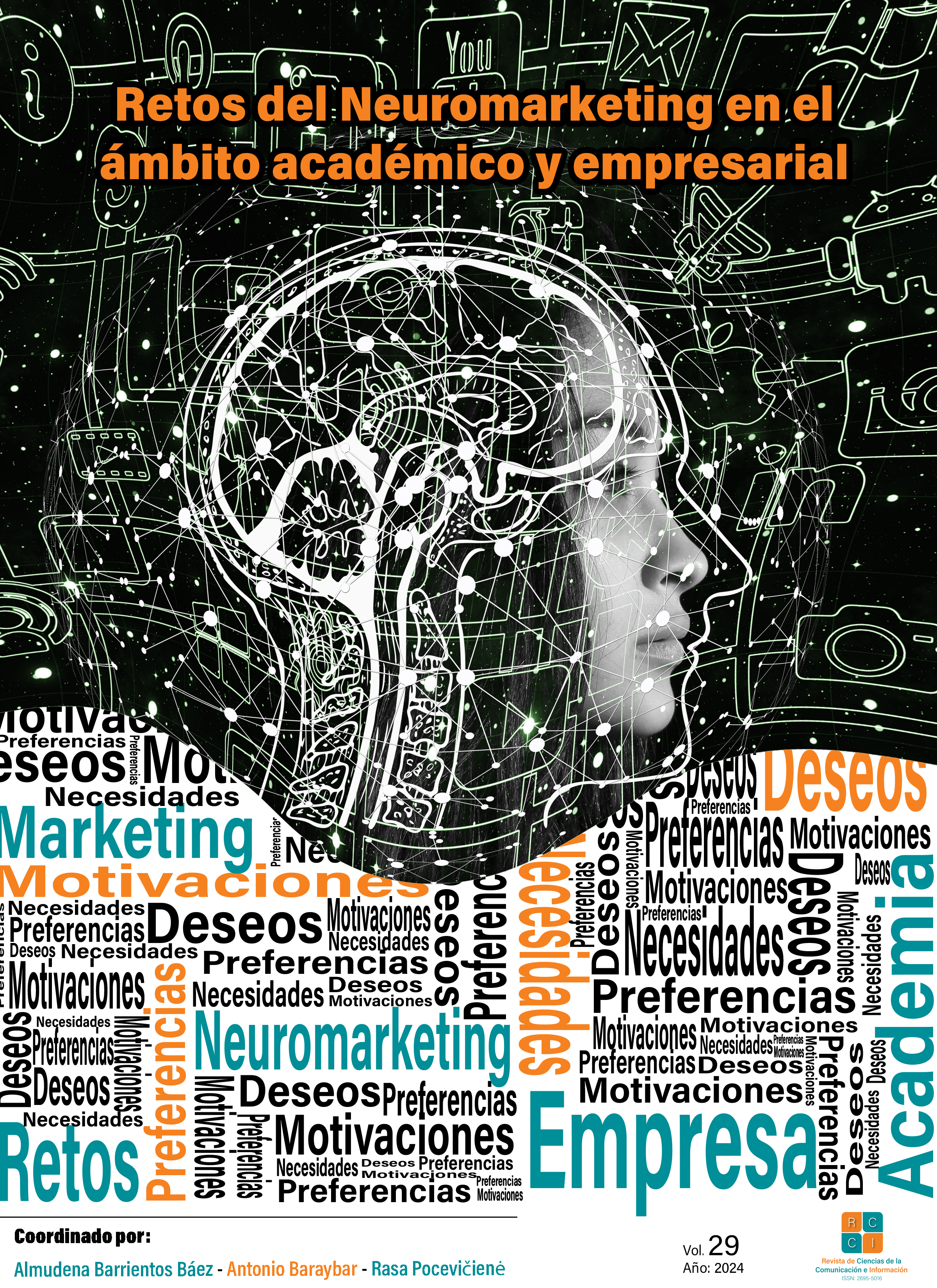Challenges of neuromarketing in the academic and business field
Main Article Content
Abstract
Neuromarketing is based on the analysis and study of the experiences, expectations, feelings, and emotions of the client and/or the user. From here, this specialty, which is the result of neuroscience and marketing, studies why we are able to remember or recognize the positive or negative points of choosing and enjoying a product or service without distinction. Emotions that, by the way, are what help us to remember a product or service as unique, beautiful, indifferent or with no possibility of being repeated in future purchase choices (Barrientos-Báez et al., 2023).
The current digital showcase allows the public to compare experiences and opinions with a single click. What is the scope of this new scenario? It is necessary to create a base from which it is possible to launch new studies framed within the Social Sciences, considering the existing subdivisions within the phenomenon, and the synergies that it can present with other branches and/or elements of study such as Communication, Neuromarketing and Artificial Intelligence, among others. It is considered a recurring need to study this matter in depth and slowly, in view of the events that, in recent years, have led to review the foundations, precisely based on new technologies and the communicative acts that are carried out.
From a transversal approach, it is necessary to establish the role of neurocommunication in the academic world in all its stages. Also, in other sectors were dealing with the client is the protagonist of the mission, vision, and objectives of a company, it is often the case that the users do not behave in the expected manner. Hence the importance of being prepared to anticipate, organize, and manage a plan to improve the experience of the user, target audience, students, etc.
Behavior together with the customer experience can be defined as the set of stories and scenarios that occur regarding their relationship with a product and/or service. This is a competitive advantage: the greater the consumer's feeling of satisfaction, the better valued and positioned the quality given to the product or service will be. Consequently, the possibility of creating engagement or loyalty will increase.
Influencers, consumers, 3.0 citizens not only have the ability to create their own content but also the enormous ease of access to the platforms to adapt content to the transmedia environment, taking advantage of their material and readapting it to different audiences so that it fulfills different roles and gains in scope and qualitative diffusion.
Consumers buy products and services, but also feelings and experiences that bring satisfaction and confidence from the emotions that emerge from them. That is why qualified and trained personnel are required both in aspects that pertain specifically to the field of advertising and sales, such as Artificial Intelligence, ICT and neurocommunication/neuromarketing. They have the aim of having a professional relationship with the client: to go beyond the creation of advertising spaces.
In this issue of Revista de Ciencias de la Comunicación e Información, researchers’ community is invited to delve into neurocommunication and the application of neuromarketing by and to increase the benefit of a company or institution, improve brand image, increase loyalty and favor the positive opinion of a product or service by different and multiple population segments. Likewise, the monograph is open to contributions in the field of the temporal evolution of the study area, its techniques, and tools.
Other lines of research:
- Impact of neurocommunication on emotions and emotional intelligence.
- Sensation, self-discovery, transformation, and control of experiences of users, consumers, students, etc.
- Artificial Intelligence, metaverse and its role in sales, advertising, and marketing campaigns.
- Keys for the conceptualization of teaching and learning styles after the pandemic caused by covid-19.
- Involvement of university governance for the integration of digital tools generating interest that implies the activation of all the senses incorporating persuasive communication techniques.
- Neuromarketing, neurocommunication, transmedia communication, influencers, and tourism.
- Neuromarketing, neurocommunication: ICT and social networks.
- Neuromarketing and ethical, social and environmental management.
- Neuromarketing, improvement of corporate reputation and CSR.
- Neurocommunication: content generation, feedback, adaptability, and media literacy.
- Pupilometry, eye tracking, electroencephalography and galvanometry as neuromarketing tools.
- Sensory marketing and the application of olfactory and auditory marketing in the commercial environment.
- Theoretical-scientific review of the conceptual framework of emotion and feeling and its application to neuromarketing.
- Proposals for marketing strategies in social networks.
Keywords: neurocommunication, neuromarketing, feelings, emotions, ICT, education, tourism, social networks, influencers, ethics, digital marketing.
This CFP is part of the framework of a Concilium project (931.791) of the Complutense University of Madrid, "Validation of communication models, neurocommunication, business, social networks and gender".
Deadline: October 23, 2023
Downloads
Article Details

This work is licensed under a Creative Commons Attribution-NonCommercial 4.0 International License.
- Share — copy and redistribute the material in any medium or format
- Adapt — remix, transform, and build upon the material
Under the following terms:
-
Attribution — You must give appropriate credit, provide a link to the license, and indicate if changes were made. You may do so in any reasonable manner, but not in any way that suggests the licensor endorses you or your use.
-
NonCommercial — You may not use the material for commercial purposes.
References
Barrientos-Báez, A., Caldevilla-Domínguez, D. y Parra López, E. (2023). Neuroeducación e Inclusividad en el Marco de la Comunicación y el Turismo. Fronteiras: Journal of Social, Technological and Environmental Science, 11(4), 288-303. http://dx.doi.org/10.21664/2238-8869.2022v11i4.p 288-303

